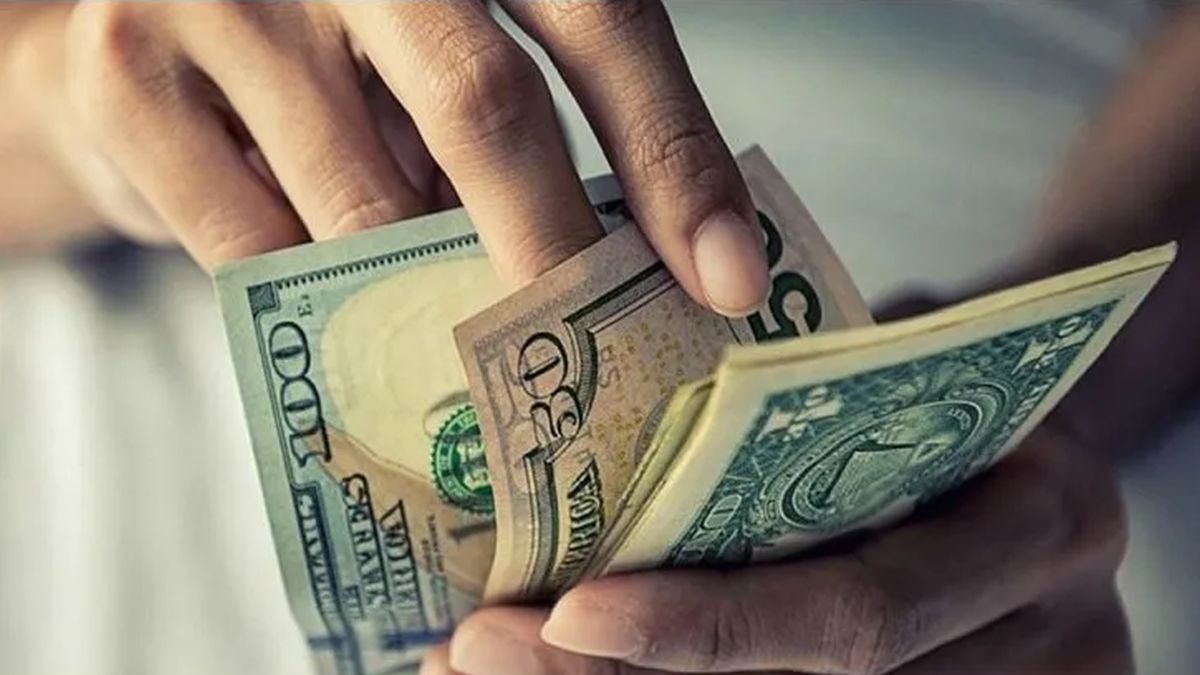The blue dollar reached a nominal all-time high on Monday, the legal dollar is still close to $500. In the background, the market foresees a political change, in the short term it is complicated.
The market continues in two well differentiated formats. In the background, he remains convinced that we are facing a change of government, bonds and shares remain firm. The S&P Merval in dollars is around US$870, and the AL30 bond is trading at US$30.
In the short term, there is skepticism about the prequel to the agreement with the IMF, this can be seen with a blue dollar that was quoted at $552, when the MEP dollar was at $497, the CCL dollar at $535.7 and the wholesale dollar at $271.
The Qatar dollar is located at $567, which makes you think that if you travel abroad, you should buy the MEP dollar at $500, unless you can deduct taxes from the tourist dollar.
billie-dollar-fund-money (3).jpg
The blue dollar is almost $50 more expensive than the MEP dollar, it is the gap between legal and illegal money. For every $1,000 you buy in the cave, you pay an additional $56,000. A true madness, if you think that with that money you can pay almost 9 lunches or dinners in a good restaurant.
The measures adopted by the Government are characterized by affect consumption (given the increase in corn, which is a basic input for meat, milk, and eggs), tax increases affect liquidity (exceptional advance of income tax for companies that earn more than $600 million), and all this is transformed into a drop in economic activity.
Soon the month of August will begin, more than one Argentine will have to change dollars in order to balance the flow of funds. Perhaps the blue dollar is near a top.
High inflation scenario changes the way of doing business
The profit margins of the commerce sector have been significantly reduced, and those who are intermediaries in the wholesale sector have become prisoners of an old commercial system. The wholesale sectors, which in some cases have margins of 15% to 30%, can no longer sell within 45 or 60 days, inflation eats up between 10% and 12% of the margin, taxes 10% and structure expenses 10%.
Many wholesale businesses are in a process of decapitalization, and if there is no incorporation of new businesses or a change in marketing, They should proceed to adjust their structures.
A country with inflation of 6% to 8% per month cannot continue with a marketing scheme similar to the one we had in the pre-pandemic. The economy in 5 years did not grow, and if we measure it per capita it had a sharp drop. Selling in terms of 45 or 60 days is suicidal with such high inflation.
The reserves of the Central Bank continue to be low, the Government will try to boost exports, it will propose as many special dollars as there are products to be able to sell abroad.
Reserves need to grow, and distortions are becoming more apparent. In the case of livestock, the producer will have to pay a special price for corn, with a dollar price of $340; however, when exporting the meat abroad, he will have to do so at a dollar of $270 minus the 9% withholding. The asymmetries in the exchange policy are evident, and the same is repeated in products derived from milk, pork and other sectors.
Conclusion
- The price of the blue dollar dropped from the rest of the prices, the elections of August 13 generated a wave of mistrust, and a plus is paid for the dollar in the caves.
- The price of the dollar measured in terms of the pesos issued and the existing reserves should be higher than the value of the blue dollar, but be careful that the recession and the fall in consumption is stronger than many imagine.
- We are in a market with a double standard, on the one hand, stocks and bonds remain firm with the hope that the next government will put order in economic matters. In the day to day the distrust is stronger, lhe informal economy is increasingly important, and the prices of the informal dollar are higher.
- In the short term, the United States could raise the interest rate to 5.5% per year, and after that it would pause the rate hike. The oil and the agricultural raw materials are rising. The yuan is revaluing, just when we had borrowed yuan from the Chinese, now we owe them more in dollars.
- Argentina continues to be a place chosen by speculators, stocks and bonds on the risewhile our currency devalues much more every day.
- It would seem that the best option is to buy instruments that adjust for the wholesale dollar, called linked dollar in financial jargon.. There are negotiable obligations and private notes adjusted for this dollar. A very good option for those who want to earn money, do not want the informal dollar, and do not want the volatility of stocks and sovereign bonds.
Source: Ambito
David William is a talented author who has made a name for himself in the world of writing. He is a professional author who writes on a wide range of topics, from general interest to opinion news. David is currently working as a writer at 24 hours worlds where he brings his unique perspective and in-depth research to his articles, making them both informative and engaging.




